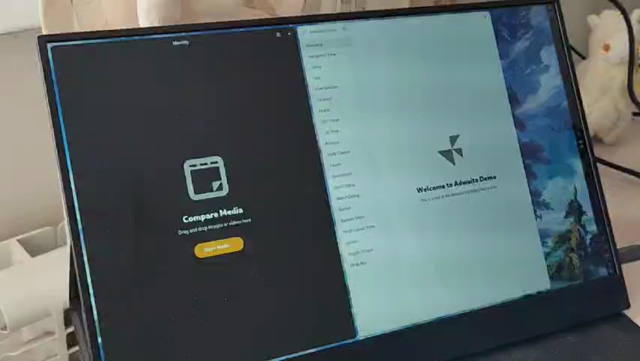Niri is great!
Why?
I’ve never tried it. “Scrollable” window managers, however, imply certain things, some of which are undesirable. Like, do you have to scroll through half the applications to get from the end to the middle? Or from one end to the other?
It looks as if it can be used like other tiling WMs, with workspaces, except that each workspace can be expanded horizontally. I’m having a hard time imagining why this would be more useful than just adding more workspaces.
Why is Niri great? How does it work on multi-monitor setups? What about it do you like?
Yeah, it’s basically a tiling window manager that lets you expand each workspace horizontally and scroll left and right through it. The value for me is that I often want each window in a workspace to be a certain size. For example, my browser is fullscreen, and my password manager is half a screen off to one side. My terminals are usually half a screen, sometimes stacked if they’re just for monitoring or something, and my IDE is fullscreen all the way to the right of them.
This is a lot like what I do. Where possible, my apps are TUIs, so terminals dominate. At any given point I have 4 tmux sessions with around 6 tabs in each. I haven’t refined that, though, because my editor (Helix) also has window support and many editing tasks (yank/paste) are easier with Helix windows that with multiple helix sessions running in different tmux tabs. This works best with full-screen terminals, and I find myself closing tmux panels to open helix windows… I need to refine this.
A few apps are GUI. Browsers, PDF viewers, graphics editors. Those are all full-screen.
How do you use the sliding feature this way, though, and how is it better than just having separate desktops? Do you use multiple displays, or only one?
I prefer to use my WM and a lightweight terminal instead of term tabs or tmux. If another window is going to be short-lived, I won’t bother, but for longer tasks I’ll move to a new workspace, often opening new terminals and file managers, as needed.
I use tmux for anything I want to be long-lived. Displays, terminals, and WMs, all crash far more often than tmux. I’ve never once had tmux crash on me; at this point, I’m not sure that it’s possible for it to crash (only half-joking).
The only times I’ve had tmux ‘crash’, I’d realized I forgot to enable linger.
When I was doing more remoting into servers, having tmux was great. These days it’s all local dev, so it’s far less important to me. Plus, I had gotten to a place where my tiling WM, tmux, terminal tabs, and vim tabs were all competing for keyboard shortcuts, and it was driving me crazy.
Plus, I had gotten to a place where my tiling WM, tmux, terminal tabs, and vim tabs were all competing for keyboard shortcuts, and it was driving me crazy.
I admit, this is so bad that occasionally - and especially if I make the mistake of stopping to think about it - my brain freezes and I can’t remember the chord for a few second. What helped immensely was first kmonad, then Kanata, and finally a QMK keyboard. I use exactly the same keys for navigation, create, delete, etc operations, and only vary the layer key - WM under my pinky, tmux under my index finger. Helix has it’s own bindings and ways of managing windows that are different enough as to not really confuse me, and I don’t use terminal tabs at all, so it’s really only WM and tmux. But, yeah: a Helix split window, in a split tmux tab, in a split herbstluftwm window can occasionally get me stuck for a few second as I unbox all the layers.
I use it on my laptop which has a small screen. I have two or three workspaces/“ribbons” with let’s say terminals (with IDE) on the first one, browser(s) under that one and chats in the bottom row. I have at most two or three windows in each row, so there’s not much overhead. Also there are keybindings to jump to the start or end of each workspace. How many windows do you usually have open?
Exciting. I last tried it about a year ago and was pretty meh about it but I loved the concept. Think I’ll try it on my surface
I wonder if this will make it into RedoxOS
I planed on using it as my WM but no openrc support :(
Well that develop it ;) as an OpenRC user you are a nieche






